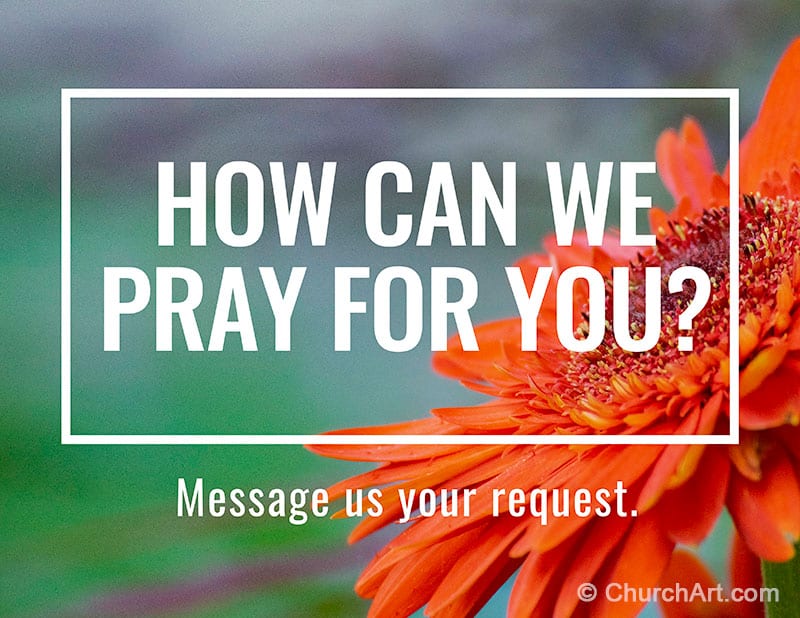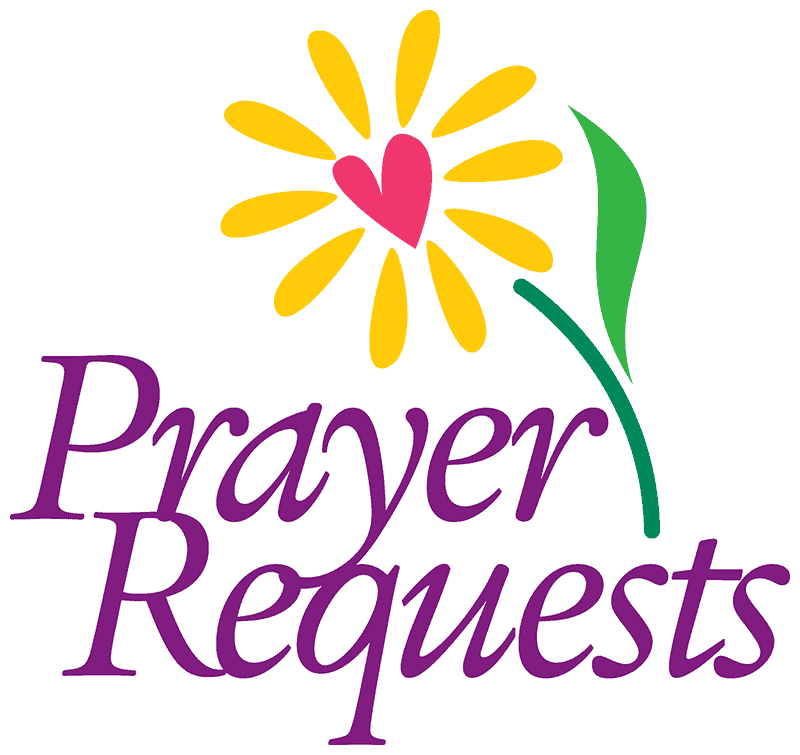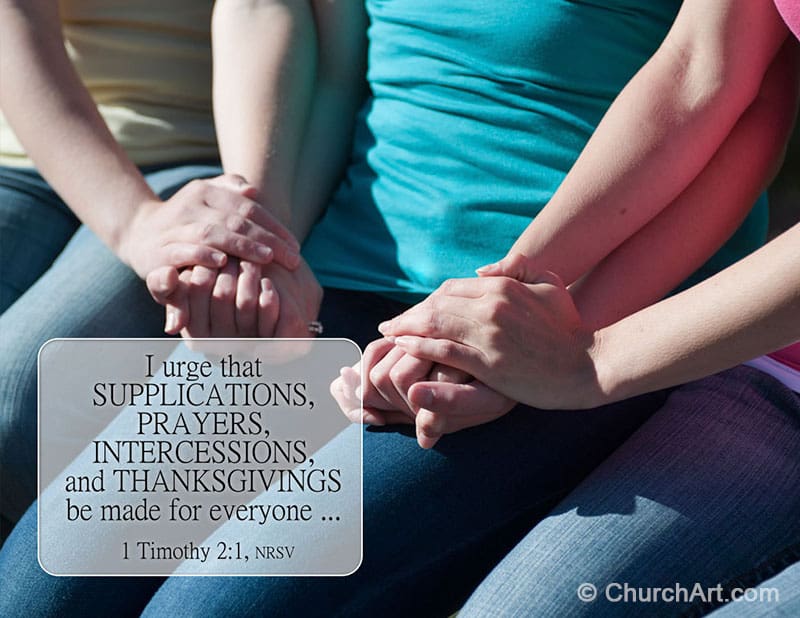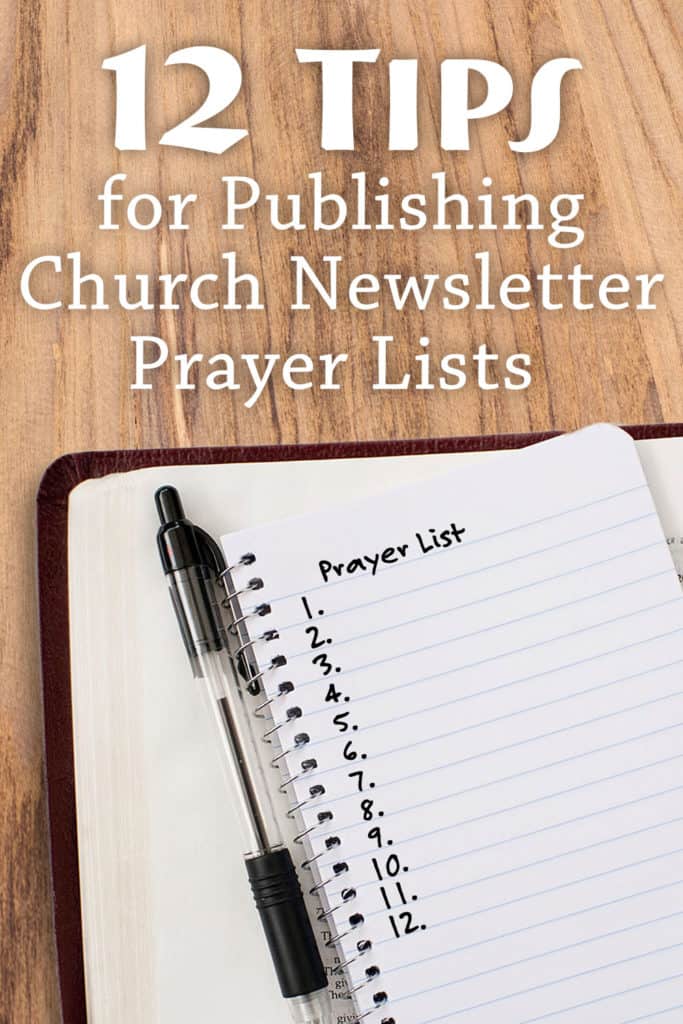
How to Create a Prayer List for Church Newsletters
For a congregation and community, a church newsletter serves several important purposes. Broadly speaking, the newsletter informs, invites and inspires readers. (This is also true of church bulletins, which act as mini weekly newsletters filled with information.)
One major aspect of that mission is to unite church members in prayer. Fellow Christians can lift up people’s needs, thank and praise God, and ask for blessings on the church staff, leaders, and ministry programs. That’s why creating and publishing church prayer lists is so important.
Every newsletter issue and every Sunday morning worship bulletin can provide names of people who need prayer support and healing. Also list other areas that church members can pray for, including special events or circumstances and thanksgiving for answered prayer.
Certainly, having a church prayer chain, prayer teams, or various prayer groups is great. But by knowing how to create and share a prayer list in church newsletters and Sunday bulletins, you can involve all church members in the rewarding work of praying.
Because of the nature of many prayer requests and the need to protect people’s privacy, care and sensitivity are essential when compiling and posting prayer lists. So now let’s take a closer look at the process—from gathering a request to publishing and follow-up.
12 Tips for Publishing Church Newsletter Prayer Lists
How to provide information while respecting members’ wishes
As we’ve explained, prayer lists are a wonderful way to help parishioners remember one another during their devotional time. Such a list also can strengthen a person’s faith walk with Jesus Christ and build them up spiritually. But for the security of church members, it’s important to have safeguards in place for publishing prayer request lists, prayer concerns, and even good-news praise items.
For starters, use the guidelines below for printing prayer-related matters in your church publications:
1. Standardize the collection of prayer requests.

Let people know how they can submit an item for possible publication. Offer multiple options, including emailing the church office and filling out a prayer request form at the church website.
No matter the format, provide options for various preferences. For example, someone might check a box marked “For pastoral use only” if the matter is particularly sensitive. Or they might select “For one-time publication” if the request doesn’t need to be repeated. (In that regard, think ahead about how often you’ll repeat a prayer request. Decisions may vary, depending on the circumstances.)
2. Use discretion with private matters—and avoid TMI.
Health concerns can get awkward, especially when people share too many details. So draw a clear line between the need to know and “too much information” (TMI). Remember: Exact medical conditions, diagnoses and procedures aren’t necessary for prayer to occur. People can pray for fellow Christians just knowing they are sick somehow or hospitalized for some reason.
Similarly, relationship issues, legal troubles, and requests for assistance can be sensitive. So use respect and discretion. When you do list such prayers (always with permission), don’t include details that may lead to unwanted attention or solicitation from people outside the church.
3. Place prayer lists in consistent locations in newsletters and bulletins.
For many churchgoers, one of the first things they turn to is the list of prayer requests and needs. So make it as easy as possible to find that section. Position the prayer lists in the same location from issue to issue and from bulletin to bulletin. Also keep the placement of prayers consistent on the church or ministry website.
Two other placement-related items to keep in mind: If your church newsletter uses a table of contents (which we highly recommend!), include “Prayer List” in that TOC listing. And below every prayer list, you might want to include contact information for adding or removing items.
4. Offer member-only access to the church website or online newsletter.
With a password-protected website (and online church directory), churches can better guard sensitive information such as prayer lists. But you’ll still need to edit certain materials and prioritize people’s privacy. The same applies to the church’s Facebook page and other social media platforms. Avoid sharing prayer lists in such public forums, unless you have a separate private prayer group online. (Someone will need to monitor that, as well.)
5. Use artwork to draw attention to church newsletter prayer lists.


Clipart, stock photos and visuals such as frames and borders add a creative touch to church prayer lists. Consider seasonal illustrations, too, as well as text treatments of relevant Bible verses.
Not only does artwork attract people’s eyes to prayer lists, but the artwork itself can offer encouragement and spiritual nourishment.
ChurchArt.com offers a wide range of prayer-related artwork to accompany lists of requests and needs. Search online for images with the visuals and sizes that work with your newsletter or bulletin. You’ll find stock photos of people praying, clipart related to prayers for hospitalized or grieving people, images for urgent prayer needs, prayer vigils, tragedies, natural disasters and much more. Some images are even themed or part of a coordinated set. (Pro Tip: Use the online Caption Editor tool to easily change the wording on most of our images.)
6. Provide extra protection for vulnerable groups.
To protect children, it’s best to avoid posting any prayer request lists that include their last names. (Also avoid posting photos of children on a church or ministry website.) Another group requiring extra caution is missionaries, especially when they serve in dangerous or high-risk areas. Never disclose locations or assignments that might put these faithful church servants in harm’s way.
Finally, be careful with prayers regarding people who are traveling or away from home. This applies to “snowbirds,” who reside elsewhere during part of the year. It also includes people who have suffered a death in the family and will be attending a funeral. Use caution with logistical details so thieves don’t take advantage of a person or family who is away from home.
7. Offer prayer resources in conjunction with the prayer lists.
In addition to lists of prayer requests, you can suggest and provide materials that assist church members in their conversations with God. Ideas include sample prayer wording, denominational prayer guides, and ideas for starting and maintaining a prayer journal. Maybe your church library has books and other materials you can recommend next to or nearby the prayer list.
8. Get permission—and get facts right.

For certain prayer request submissions, you may want to review the specific wording with people before publication. Also double-check the spelling of names (and consider whether to include both first and last names). Then always proofread carefully before publishing a church prayer list. If an error does occur, correct it quickly before the next newsletter issue or worship bulletin goes to press.
9. Include prayer requests for the church and its various groups and ministries.
Church prayer lists don’t just need to feature sick or injured individuals. Also use them to encourage prayer for the congregation, the local neighborhood, the larger Christian church, and national and world concerns.
On a rotating basis, list prayer requests for various church leaders, teachers and helpers. Remind members to pray for homebound people, politicians, people serving in the military, first responders and others working in challenging occupations. Also add to prayer lists general groups such as children, teens, job seekers, single parents, people struggling with addiction or dependency, those dealing with chronic illness, caregivers, and people who face end-of-life decisions. Even if you don’t include specific names, people who fit in any of these categories will be grateful to see that they’re being mentioned on prayer lists.
10. Establish a privacy policy for all church publications.
Enlist the help of pastors, church staff and volunteer leaders to draft guidelines for publishing and posting information. Samples of privacy policies tailored specifically toward churches are available online. Find a template and then adapt it to your congregation or situation. When your church privacy policy is complete, share it in all your publications and post it throughout the building (including in the Sunday school and youth ministry areas).
11. Follow-up on prayer lists to build up the church body.
A pastor, volunteer leader, teacher or Bible study facilitator can easily and effectively use church newsletter prayer lists to minister to congregants. Have church staff and trusted helpers regularly contact people who’ve requested prayer. They can check to see how the individual or situation is doing, update the request if necessary, and follow up with other needs that may arise.
With permission, you could mention in a future prayer list how God answered a request or need. Readers will be encouraged and inspired to discover how God works through prayer—and through fellow church members!
12. Remember the goal of creating and sharing prayer lists.

By regularly offering prayer lists in your church newsletters and bulletins, you meet people’s real needs. As a body of Christ, you serve and love people by lifting their prayer requests directly to God. In the process, you can encourage church members to have deeper, richer prayer lives.
Your entire congregation will benefit, too. For example, published prayer lists might lead to the creation of a new prayer ministry or a community outreach opportunity. Maybe Bible study groups will start incorporating the weekly or monthly prayer lists into their closing prayer time when they meet (whether in person or online).
Prayer itself is a form of worship. And you never know how the Holy Spirit will work through the newsletter prayer lists that you faithfully compile and post!
Printing or posting a prayer list—with care—in your church newsletter and bulletin has countless benefits. So bless your members and readers with sensitive, respectful, encouraging lists. Be sure to provide prayer requests and praises regularly, because once you begin, people will keep looking for future lists!

Newsletter Newsletter Team
For over 40 years we’ve been the church newsletter experts. Our goal is to help you communicate to your members and look professional doing it. From editors to artists to writers and support staff, we’re here to support you each week and month of your busy schedules.



